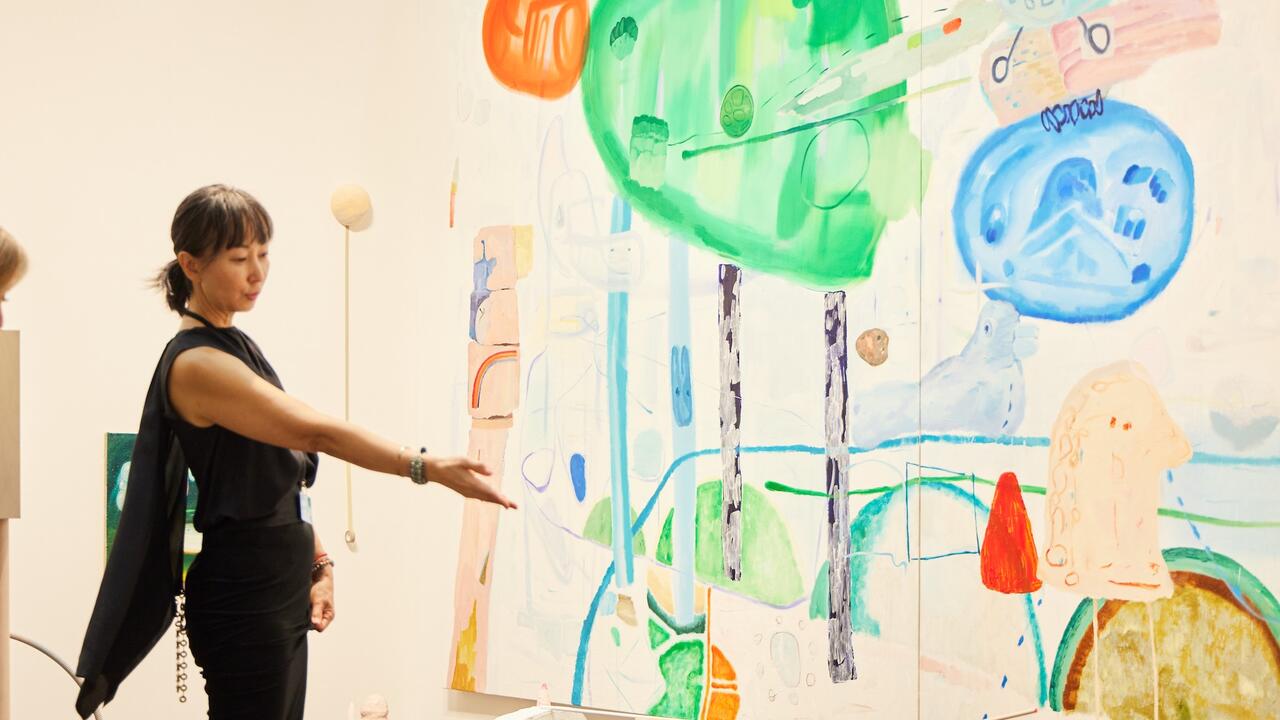Tommy Støckel
How is geometry susceptible to meaning? Is time travel possible? In which direction does space curve? How do journeys to other dimensions appear to the naked eye?
How is geometry susceptible to meaning? Is time travel possible? In which direction does space curve? How do journeys to other dimensions appear to the naked eye?
From the limited human perspective of Plato’s cave to 19th-century spiritualists who held that the fourth dimension was the locus of the soul, and to the era of the telecosm, with its blotting out of reality outside the screen (which kind of takes us back to Plato’s cave), dimensionality is at the heart of perception and our conceptualization of time and space.
In the works of Tommy Støckel contemporary art no-nos such as autonomy and illusionism are rendered in paper, cardboard and polystyrene with a meticulousness that recalls the dedication and self-sacrifice of the great discoverers. Apart from having tangential affinities to geometric sculpture (frozen in the moment before it planned its escape from the plinth), the art-historical subtext of Støckel’s work is the avant-garde claim to revolutionize time and space, translated to the realm of self-replication. For Støckel true sculptural autonomy is sculpture coming into existence seemingly of its own volition. If, when you step back to look at a painting, you bump into a work such as New Life (2002), the chances are it will already have spotted you and is about to bite back.
Part of the peculiarity of Støckel’s objects is the fact that it is so difficult to determine the context in which they were produced. They do not smack of studio practice – they are closer to a kind of bedroom perfectionism, but still look as though they would always be able to find a wormhole to infinity even from this monadic space of subjectivity. If you employ the works’ cosmic rationale to extrapolate their carefully calibrated sculpture-on-a-plinth-in-an-art-gallery standard size, you can easily imagine them defying human scale with fractal indifference, growing to immense proportions or being warped down to the infinitesimal. This is the hobbyist’s investigation of what perceptions it is humanly possible to create.
In cartoons and films time travel is often represented by spiralling, pulsating concentric circles, signifying some incremental acceleration. In Støckel the physical possibility of moving forwards or backwards in time is at the heart of his studies of dimensionality and leaps of mathematical logic. The anamorphic At the Speed of Light (2000), for example, looks like it wouldn’t mind regressing for a Cubist rendezvous with Picasso and Braque, while Convex and Concave (2004) could track down M.C. Escher for a round of flipping between dimensions.
The works revel in the paradox of duration. Paper, perhaps the least durable artistic material, is also – its thickness being almost nil – the one closest to both infinity and nothingness. Debunking the gravity and object-hood of sculpture, Støckel’s pieces are folded to form the infra-thin skin of spheres behind which a vacuum lurks. When a character in H.G. Wells’ The Time Machine (1895) asks rhetorically, ‘Can an instantaneous cube exist?’, he goes on to say that any physical body has extension in four directions: length, breadth, thickness and duration. Spectrum (2002) even performs an ecstatic stretch of sculptural time.
For all their frailty Støckel’s objects and sculptures make you smile because they take the stage with magisterial universality, as if they were above discussions about mere culture: ‘We are concerned with eternal questions that were valid a million years before Homo sapiens began walking upright, on two legs,’ they might say, ‘questions that will also need to be asked after civilization has come and gone.’ But even questions about eternity are political. Today life has effectively reached the speed of light, with urban populations caught up in the global market’s acceleration of production, distribution and consumption. Indirectly Støckel’s works confront this capitalization of time and space, not only through their ‘educational’ staging of knowledge using the most democratic of materials but also through their investigation of the density of phenomena as experienced through illustrations in the yellow pages (a source that could hardly be more specific in terms of time and place). In City 2 (2002), for example, London is reorganized from A to Z in a new cosmology beyond chaos and order.
In other words Støckel strikes a note of criticality where he feels convention and credulity influence the basics of human perception and cognition. This is, indeed, a timeless issue. Edwin A. Abbott, in his novel Flatland (1884), describes a world of two dimensions, in order to satirize the prejudice of Victorian perspective. The book’s four-cornered protagonist A. Square explains life in a world with no thickness to a sphere from the three-dimensional world thus: ‘You, who are blessed with shade as well as light; you, who are gifted with two eyes, endowed with a knowledge of perspective, and charmed with the enjoyment of various colours; you, who can actually see an angle, and contemplate the complete circumference of a circle in the happy region of three dimensions – how shall I make it clear to you how we in Flatland experience recognizing one another’s configuration?’
The shallowness of human nature, and the beauty of our pointless drift along the temporal dimension!
















